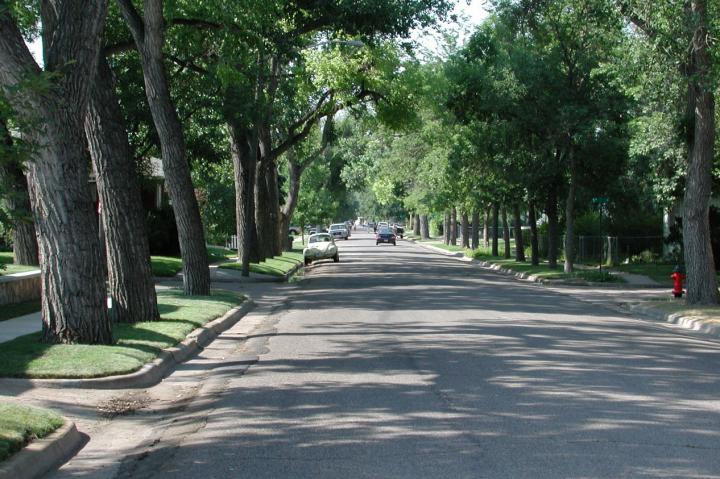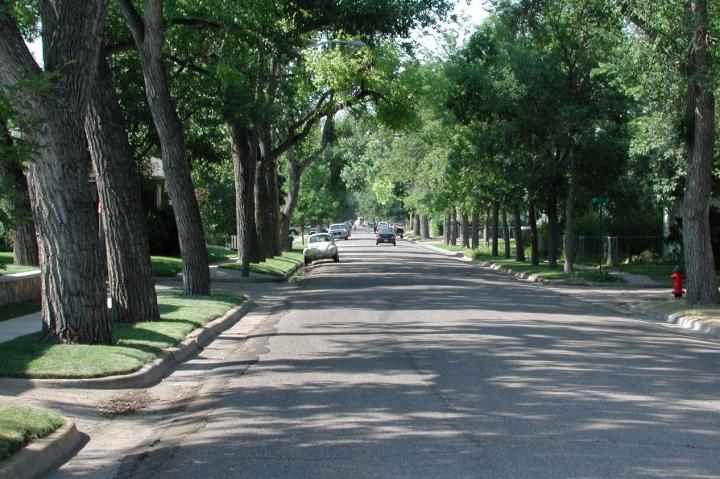
Credit: U.S. Forest Service
Albany, Calif. – Sometimes in the cramped environs of U.S. cities every inch counts, especially if attempting to make space for nature. City planners and urban foresters now have a resource to more precisely select tree species whose growth will be a landscaping dream instead of a maintenance nightmare.
The U.S. Forest Service's Pacific Southwest Research Station recently published a technical manual and launched the most extensive database available cataloging urban trees with their projected growth tailored to specific geographic regions.
"Knowing a tree's maximum size can avoid future conflicts between roots and sidewalks or branches and power lines," said Greg McPherson, research forester for the Forest Service and lead author of the technical report and database.
The products are a culmination of 14 years of work, analyzing more than 14,000 trees across the United States. Whereas prior growth models typically featured only a few species specific to a given city or region, the newly released database features 171 distinct species across 16 U.S. climate zones. The trees studied also spanned a range of ages with data collected from a consistent set of measurements.
"There are very few studies, if any in the world, that can compare to this in terms of scope with regard to the number of trees studied, the species analyzed, the geographic range and ages, and so forth," McPherson said.
Advances in statistical modeling also have given the projected growth dimensions a level of accuracy never before seen. Moving beyond just calculating a tree's diameter or age to determine expected growth, the research incorporates 365 sets of tree growth equations to project growth.
"Although tree growth is the result of complex processes, growth equations capture changes in tree size with age in a surprisingly simple and accurate way," said Natalie van Doorn, a research urban ecologist with the Forest Service and co-author on the study.
In addition to predicted tree growth, the manual provides species-specific data on foliar biomass, or amount of foliage, that is critical to projecting uptake of air pollutants.
Written in a way to be accessible to non-technical users, the technical report gives step-by-step instructions on how to use the equations to calculate tree dimensions, biomass, carbon storage and other features of interest to urban foresters.
"The research and publication were done with the urban forester and city planner in mind," van Doorn said. "Urban trees benefit communities in innumerable ways, and it's this information that can help communities make the most of these natural resources."
###
USDA is an equal opportunity provider, employer and lender.
Media Contact
Paul Meznarich
[email protected]
612-741-7265
http://www.fs.fed.us/psw/





